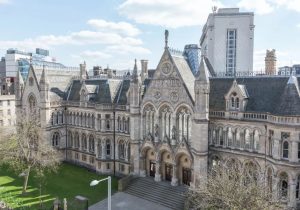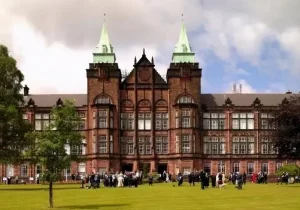
Lancaster University (Lancaster University), referred to as Lancaster, University of Lancaster degree. was founded in 1964, is a research university located in Lancashire County, northwest England, fake diploma of University of Lancaster. enjoy a good academic reputation, belongs to the plate glass university, buy fake University of Lancaster degree. is a member of the N8 University Alliance, the European University Association, buy University of Lancaster diploma. the Association of Commonwealth Universities, It has the Lancaster University School of Management (LUMS) as well as the School of Environmental Sciences, the Department of Linguistics, the Law School and so on.
Lancaster University School of Management is one of the world’s top business schools with AACSB, AMBA, EQUIS and SBC accreditation, and its academic reputation is second to none in the world. It is famous for accounting and finance, business management, and has an ace professional marketing. He has a strong academic reputation in management studies. According to the QS Business Masters Rankings 2021, Advanced Marketing Management is ranked 6th in the UK and 21st in the world. According to the results of the 2020 Financial Times rankings, Lancaster University’s Master of Finance is ranked 8th in the UK and 43rd in the world. Lancaster University School of Management is rated ‘world leading’ for 100% of its research environment in the REF2021 rankings and the number one business school in the UK for its research capabilities. Ranked 70 in the world for Business Management in the QS World Subject Rankings.
Lancaster University has repeatedly been rated as an excellent scientific research university in the UK, and is one of the 25 British universities with the most satisfied students. Ranked 14th in the UK in the 2024 Times and Sunday Times Good University Guide, 10th in the 2024 Full University Guide and 11th in the 2024 Guardian University Guide. Ranked 122nd in the 2024QS World University Rankings, 122nd in the 2023 Times Higher Education World University Rankings, and 13th in the 2020 Times Higher Education “Golden Age” University Rankings.
After the Second World War, with the growth of the population and the emergence of new technologies, the British government became increasingly concerned about the development of higher education. In 1947, at a public meeting held in Lancaster, a proposal for the establishment of a university in the city was approved. Although the idea was shelved due to a lack of government funding, in early 1961 the proposal was revived by Lancashire County Council and the proposal submitted by the North West Lancashire University Promotion Committee, chaired by Lord Derby, to the Lancaster City Higher Education Funding Committee was approved.
On 23 November 1961, the British Government officially approved the establishment of Lancaster University, and Sir Alfred Bates chaired the work of the University Preparatory Committee. The publication of the Robbins Report in 1963 led to a substantial expansion of British higher education. The seven universities built at that time are often referred to as plate glass universities, a term derived from their modern architectural design style, which extensively used plate glass in steel or concrete structures. The plate-glass University is in stark contrast to the red brick University, which is dominated by Victorian architecture, and the older classical University.
The first president, Charles Carter, took office on April 1, 1963. On 14 September 1964, the Royal Charter of Lancaster University was granted by the Queen of England, and Her Royal Highness Princess Alexandra served as Chancellor of the University from November 1964 until December 2004. The first class of students enrolled in the undergraduate degree program in October 1964, initially teaching at St Leonard’s House in Lancaster City, while students lived in the Morecambe area or the city of Lancaster. From 1966 to 1970, the faculty of Lancaster University gradually moved to the Bailrigg area on the outskirts of Lancaster. At the same time, the first colleges of Life were officially established, and from 1968 students could begin living on campus.
Lancaster’s initial disciplines include business, Natural sciences and humanities, with an emphasis on modern linguistics, while later disciplines focus on social sciences and engineering technology. The first four schools of Life were established in Bowland, Lonsdale, Cartmel and County, and by 1990 five more were added: Furness, Fylde, Pendle, Grizedale and Graduate. Lancaster University has spent a lot of time and effort in establishing physical buildings and infrastructure. In the new century, Lancaster University extended its student housing in Alexandra Park, so that all new students could have their own rooms, and have loved living on campus ever since.
Lancaster University has been committed to research and teaching since its inception, with many successful departmental teams established in the early years, for example, in environmental sciences, cryogenic physics and the creative arts. In seven research assessment exercises between 1986 and 2014, Lancaster University has steadily risen in the rankings, especially in 1992, when Lancaster University entered the top ten overall ranking of UK universities for the first time. In addition, Lancaster University is highly ranked in all major UK university league tables, including the Guardian (10th), The Complete University Guide (8th), The Times (10th) in the 2021 overall UK University Rankings. Lancaster University has maintained a strong reputation for research and constantly seeks to apply its research findings for the benefit of society.
As of 2020, Lancaster University has approximately 13,000 full-time students studying for undergraduate, master’s and doctoral degrees, and more than 100,000 alumni worldwide.














